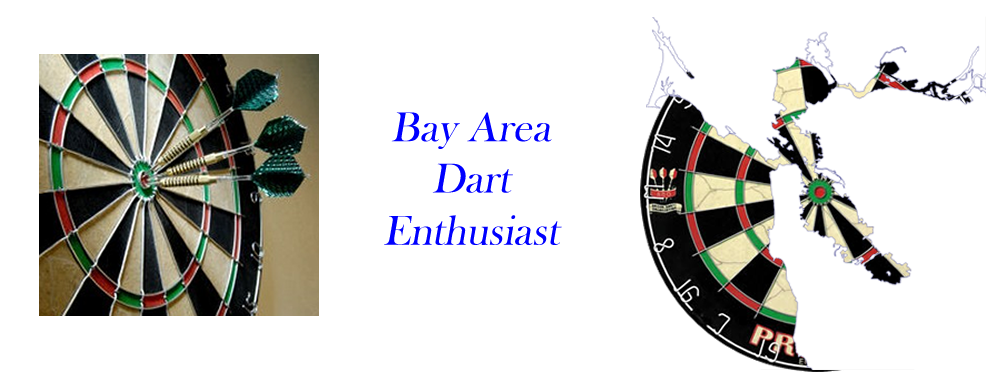- Grip
- Straight barrel dart
- Thumb and forefinger last to leave dart at end of throw to follow through.
- Common stance, foot just off a side-position, i.e., abut thirty degrees between a side stance and toe-on.
- Don’t lean forward much, keep body over knee and ankle (see the consistency article)
- All about a rhythm, consistent smooth rhythm and cadence from aim, retraction and then throw with follow through.
- Elbow once set in the aim - DOES NOT DROP.
- Elbow remains pointing vertically down to the ground and then rises up to the arm aim level as you reach the follow through, extension of hand, fingers, etc., as the dart leaves the hand and arcs to the target.
Darts: a game where participants compete with one another by throwing small arrow like devices at a target that is round and has numbers and sections and an inner bull with an outer bull and so on. Darts now refer to the standard game with a specific bristle board design and a set of rules. Rules that are general to the game and rules that govern games like, “501,” “301,” and “Cricket.”
Darts is a traditional pub game that was and is commonly played in the United Kingdom as well as other places in Europe and across the pond here in the America’s.
Wikipedia tells hits history in a terse form, i.e., “The dartboard may have its origins in the cross-section of a tree. An old name for a dartboard is "butt"; the word comes from the French word but, meaning "target". In particular, the Yorkshire and Manchester Log End boards differ from the standard board in that they have no treble, only double and bullseye, the Manchester board being of a smaller diameter, with a playing area of only 25 cm across with double and bull areas measuring just 4 mm. The London Fives board is another variation. This has only 12 equal segments numbered 20, 5, 15, 10, 20, 5, 15, 10, 20, 5, 15, 10 with the doubles and triples being a quarter of an inch wide.”
There have been a variety of darts created over the years but the most common today is the tungsten dart. There are electronic darts but for this blog and for my efforts in tossing darts I remain a steel dart fan and enthusiast. I am recommending a book for novice darters but only because it appealed to me and my studies and rest assured most of the dart books out there are outstanding. In short, find one if this one does not fit your needs and get it. I can tell you when I started to play over twenty years ago, before I laid down my darts in 96, I tossed darts for several years without knowing some very important and critical mechanics, etc., of the dart game. As I take up once again my steel darts I have found a fountain of information to help make the game both enjoyable and competitive. Enjoy, diddle for the middle and let the darts fly!
Tuesday, October 25, 2016
The Throw - more
Monday, October 10, 2016
First Dart
Tips on Darting
- Dart - for every grip there is a dart and weight that fits it.
- Stance - Comfort, stability, balance and rhythm-cadence with consistency.
- Rhythm - one of the most important aspects of darts using the first two, i.e., a good comfortable dart and having an adequate stable comfortable balanced stance. The rhythm must be consistent in all darts but especially from the first dart to the second and then the third for a consistent rhythmic three darts to target.
- Shoes - Nice solid thick sole with a decent heel. The comfort, especially over long periods of time walking to the ockey line, to the board for dart retrieval and then back behind your opponent to await your turn. Personally, the athletic shoe works well as long as you find one that supports and does not result in strain once you assume your stance and when you assume the stance multiple times over a long match period.
- First Dart - The first dart has to be in a solid advantageous position, i.e., take your time with the dart because in most cases how that dart flies and lands will influence and effect the second and third dart. If you miss the treble 20 how that shaft and flight sit will block or allow another chance at the treble but if your first dart flies off to the five or one you chances of getting back on target diminish, i.e., often the second and third will fly badly. If your first dart is bad, take a moment and step back if you wish from the ockey line, get your mind back in the dart then step up as if the second were the first dart and visualize quickly how it flies and strikes the target then let it fly.


